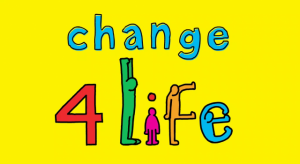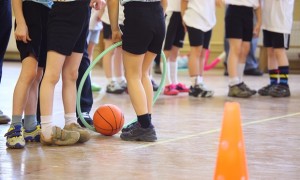Phil Chamberlain, director of external relations at the Youth Sport Trust, explains what could lie in store for school sports

Phil Chamberlain, director of external relations at the Youth Sport Trust, explains what could lie in store for school sports.
As the dust settles on the release of the government’s new sport strategy, Sporting Future: A New Strategy for an Active Nation, Phil Chamberlain, director of external relations at the Youth Sport Trust, explores the potential implications for the delivery of physical education (PE), school sport and physical activity for young people.
It is not often that a new government strategy is universally welcomed by the sector it is aimed at. On the publication of the long-awaited new sport strategy, that was certainly the case; organisation after organisation welcomed the content, looked forward to working with the government on realising their ambitions, and ensured their voice was heard.
This was the same for the Youth Sport Trust.
“We welcomed the strategy as it refers to many of the asks we included in our response to the preceding consultation; as well as our manifesto for PE and school sport – Unlocking Potential – launched in January 2015. But, soon this welcoming noise needs to move into action. It is with interest that the sector now begins on the next consultation journey with Sport England which is now asking for your expertise in shaping the strategy, in line with government aspirations, through its online consultation.
Since the strategy’s release, much has been said about “sport for development” – with the government suggesting this to be a big reform, setting out how investment in sport and physical activity will change to promote personal and mental wellbeing, community development and to benefit our economy.
So, are we to think this is a new concept? Not so.
The Youth Sport Trust has been at the cutting edge of using the power of sport, PE and physical activity for broader social good in building a brighter future for young people throughout our 20-year history. You only have to glance at our 20th anniversary film or publication to realise the impact sport can have on changing young people’s lives for the better.
However, this does mean that future funding decisions will be made on the basis of the social good that sport and physical activity can deliver, not simply on the number of participants reached.
A good thing? Yes, undoubtedly. But, we still need numbers to increase in terms of activity levels; particularly as only 21% of boys and 16% of girls aged five to 15 years old meet the chief medical officer’s minimum recommendation of 60 active minutes a day. It is for this reason that the curriculum offering of PE and school sport is so important – a period in the school day when every young person is required to be active. But, that activity needs to provide powerful tools against the obstacles to a young person’s education and against those health inequalities children arrive at school with.
As part of this new strategy, Sport England’s remit will extend to engage young people outside of school from the age of five to create a healthier and more active nation. This change is likely to lead to a major rethink for sports bodies about where they spend the money they receive to boost grassroots sport. So, some real opportunity for all of us working to ensure young people have the best possible sporting start in life, and we stand ready to further the impressive partnerships we have across the sporting landscape to make this happen.
Importantly, the government will continue its investment in the primary PE and sport premium and we will therefore continue our efforts to advise schools on sustainable and effective ways to use it. The strategy states that the next challenge will be securing the legacy of this investment for future generations of pupils. In future, the Department for Education (DfE) will use reporting information required from schools to evaluate the impact of the investment, assess how to improve its sustainability and identify where further support may be needed. Under the new inspection framework, Ofsted inspectors will assess how effectively leaders use the primary PE and sport premium and measure its impact on outcomes for pupils, and how effectively governors hold them to account. This is something that the Youth Sport Trust has been calling for and will continue to support in its application.
Also, the strategy makes clear that more must be done to better understand the barriers and issues around the drop-off in engagement from primary to secondary as well as identify good practice, particularly for those groups who are most affected, such as girls. We made it clear in our response to the consultation that there needs to be a “pathway through education” of PE, sport and physical activity for young people – from early years settings, to primary school and then transition to secondary school.
As a parent, as well as someone working in this field, I understand the challenges of the transition from primary to secondary school, with my own daughter soon to enter her last year of primary school – and already considering the new experiences she will face. Dance is important to her, and she is already undertaking classes at a local secondary school, exposing her to the realities of what that has to offer, introducing her to new people and experiences but, more importantly, preparing her for her year 7 experience. The Youth Sport Trust believes that PE, sport and physical activity has a clear role to play in this important time, and we hope that the government considers this in the next phase of strategy implementation.
One area we are clearly referenced to help lead, is a review of the school games – to assess its effectiveness and future priorities, ensuring that it is appropriately positioned within the wider context of this new strategy for sport.
With the term “review”, comes a sense of uncertainty. However, given the positive reference to the school games in the strategy, alongside the special mention for the school games organisers (SGOs) and a commendation for all the work they do, we are keen to engage in the next phase of the programme. We are hopeful that any review will consider what further role SGOs can have in the broader strategy deployment – especially in supporting the transition from primary to secondary education as well as developing and promoting local opportunities for participation.
And finally, with one strategy released, we now await another – the publication of the government’s obesity strategy. We  understand this will have a specific focus on childhood obesity, but with the current debate playing out in the media and between politicians focusing on the “sugar tax”, we must not lose sight of the importance of physical activity within this agenda. With the sport strategy emphasising the importance of development of the skills needed to enable children and young people to better engage in sport, we deliver the Change4Life Sports Clubs programme which has done much to address inequalities and access issues that impede physical development and child health. Our hope is not simply that this programme is continued and expanded to all schools, but that the government will encourage and explore opportunities for all such initiatives to join up more effectively.”
understand this will have a specific focus on childhood obesity, but with the current debate playing out in the media and between politicians focusing on the “sugar tax”, we must not lose sight of the importance of physical activity within this agenda. With the sport strategy emphasising the importance of development of the skills needed to enable children and young people to better engage in sport, we deliver the Change4Life Sports Clubs programme which has done much to address inequalities and access issues that impede physical development and child health. Our hope is not simply that this programme is continued and expanded to all schools, but that the government will encourage and explore opportunities for all such initiatives to join up more effectively.”
To find out more about these strategies, and the implications for schools, Phil will be chairing an influential panel at the Youth Sport Trust’s National Conference on Thursday 3 March 2016. The panel will include: Baroness Sue Campbell, chair of the Youth Sport Trust; Nick Pontefract, head of sport at the Department for Culture, Media and Sport (DCMS); and Jeremy Mean, deputy director, physical ctivity, at the Department for Health.
To book your place at the conference visit the Youth Sport Trust website.

